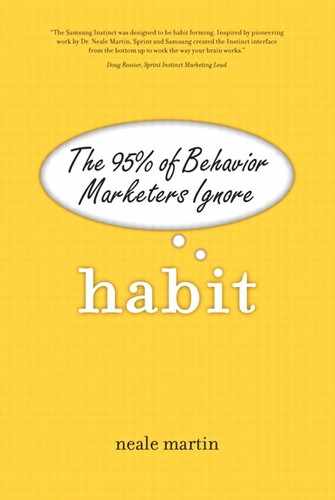Promoting Habits
Promotion is an odd marketing concept, encompassing a wide range of activities from advertising to sales promotions. Although it’s hard to understand why a coupon would be in the same marketing category as a television commercial, the promotion P deals with anything that communicates with customers and potential customers. As previously noted, every component of the offer communicates something, but the promotion component of the marketing mix recognizes the responsibility of the firm to package its messages for customer consumption.
Hundreds of billions of dollars are spent annually trying to influence customer behavior. Unfortunately, many people believe that much, possibly most, of this money is flushed down the drain. “I know half of my advertising is wasted—I just don’t know which half,” John Wanamaker famously said more than a hundred years ago. Managers from small businesses to giant multinationals harbor the same sense of frustration when it comes to their promotional budgets.
This aggravation is largely a reaction to having been thwarted by customers’ habitual processes for decades. Our senses are geared to ignore irrelevant stimuli, a process that is constantly refined as we learn about what is important in the environment. The first bill stuffer we see might get our attention, but after receiving hundreds of these little literary gems, we start tossing them in the trash without looking at them. The same goes for billboards, radio commercials, and magazine ads. Email was originally a very powerful tool for companies to communicate with their customers, until spam and phishing turned it toxic. Now we employ sophisticated software to help our senses filter out the junk. AOL’s cute “You’ve got mail” audio announcement would drive us crazy with the hundreds of junk emails sent to each of us daily.
Adding to the complexity of promoting products is a radical transformation of promotion options. The Internet provides a platform of communications that advertisers found unimaginable just a few years ago with search, rich media, and now mobile options for reaching customers. Location-based services promise to radically alter the capability to combine promotional activities based on where a customer is in real time. The capability to send a coupon to a customer’s cell phone when she’s near a store or a coffee house or in a grocery store has marketers excited. We’re still not sure what customers will think about this type of promotional intrusion.
To address the complexity of promotion, it’s useful to break the concept into its constituent parts and address their implications to habit formation. Typically, promotion is broken into advertising, personal selling, sales promotion, public relations, and direct marketing. With the rise of the Internet (and IP distribution) and broadband wireless technology, several new categories of promotion have emerged, centering on search and email. In each instance, the focus is on generating the types of behavioral outcomes that will lead to specific goals.
